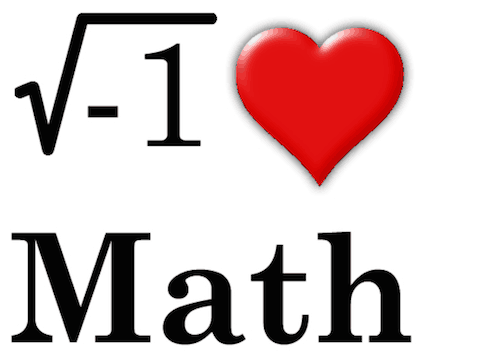Conceptual Instruction And Middle Grades Math Blends: An Interview With Content & Intruction Expert Shara Turner

Shara Turner is Manager, Mathematics Learning Architecture at Compass Learning and a certified master mathematics teacher. She attended the National Council for Teachers of Mathematics (NCTM) Research Conference and Annual Meeting in New Orleans in April. After reading her report on the conference, we had a few questions regarding the blended instructional model for middle grade math.
Q: You mentioned that conceptual math instruction was a major topic at NCTM. Conceptual instruction has long been an issue at the middle grades. Why is that? Are we making faulty assumptions about students’ conceptual foundations coming out of the elementary grades?
There is often a natural temptation to want to show students how to model and solve problems—in middle grades especially because there is often a sense of urgency to get students to attain procedural skills fluency. This can lead to students simply blindly following directions, and it may even appear that they understand. But it’s really just a rote procedure that they are memorizing with little depth of conceptual understanding.
It’s important to first introduce concepts at a conceptual level so that students can understand the “why,” not just the “how.” This is how students gain deep understanding and a strong foundation so that they can increase their performance when moving toward more complex procedural strategies. They should be able to determine the correct solution to a problem, but they should also be able to make sense of the math and understand the conceptual path necessary to get there.
This is important at all grade levels, not just in elementary grades, and the Common Core State Standards are encouraging all teachers to incorporate more conceptual math instruction into their classrooms. Fortunately, the standards allow for more focus, which should give teachers the ability to slow down a bit and concentrate more on deep understanding rather than feeling a need to rush through and teach a large volume of skills at a relatively shallow level.
Q: How does/can conceptual math instruction fit in a blended model? How much instructional time and/or ‘bandwidth’ should be devoted to it?
There are multiple ways to incorporate conceptual math instruction into a blended model. You want an appropriate balance between conceptual and procedural instruction. The two should go hand in hand, working together to help students develop deep understanding of the focus standards in their grade level. There are multiple ways to accomplish this. Students need time to see concepts modeled and explained. They also need time to reason and justify their own thinking. This should be hands on, face to face, and digital.
Q: This is a related question—in your ideal middle grade blended classroom, how would you handle conceptual instruction?
I would introduce concepts through a student-centered approach, providing an experience for students to question, reason, build on prior knowledge, and develop their own understanding. I would serve as a facilitator, asking questions and guiding them to an accurate understanding of new concepts. I would also allow students to share solutions with one another.
It’s important to develop an environment where students interact with each other, the teacher, and digital curriculum and tools to share ideas, compare strategies, and challenge results. They need to be able to make sense of the math in a variety of ways.
Q: This question also relates to the second one above. In many ostensibly good blended models, conceptual instruction often seems to be consigned to whole-group or project-specific contexts. Is this preferred? Why? Shouldn’t conceptual and procedural instruction be more closely integrated? Why (or why not)?
No, conceptual instruction should be integrated into all contexts. It tends to be more prevalent in whole-group instruction because teachers can facilitate and model concepts a little easier in this context. However, there are now many digital programs that can model and facilitate conceptual understanding at an individual level. Digital curriculum can adapt to meet the individual needs of each student. In addition, many programs can help support the teacher by modeling the instruction in a way that may not be easy for the teacher to create or adequately illustrate in other ways.
Q: What role(s) should/could technology play in addressing conceptual instruction, particularly in a blended environment? Is there anything about digital delivery that makes it better (or less well) suited to addressing conceptual concerns?
One of the many advantages of digital curriculum is that you can provide opportunities for students to reason and justify their thinking through an online community. Providing topics of discussion in a teacher-controlled forum mimics many real-world discussions.
You can also harness the capabilities of virtual manipulatives and digital tools to help students build deep understanding of concepts. When facilitated in a way that helps students use tools to develop understanding rather than just obtain the correct answer, virtual manipulatives can enhance a learning experience far beyond hand-held manipulatives.
In addition, with PARCC and SBAC’s new online assessments, it is imperative that students interact with math in a digital format. If not, students will have a severe disadvantage when testing. You want to expose students to a variety of technology-enhanced item types so that they develop very flexible knowledge and become nimble with mathematics whether they are being asked to provide a constructed response or to use a digital protractor to measure an angle. You don’t want technology, which can elevate the student’s learning experience in so many ways, to present a barrier to understanding or performance simply through lack of familiarity. Digital instruction thoroughly integrated in a blended learning environment equips students with another powerful skillset that will do nothing but work to their ultimate advantage.





0 Comments
Leave a Comment
Your email address will not be published. All fields are required.